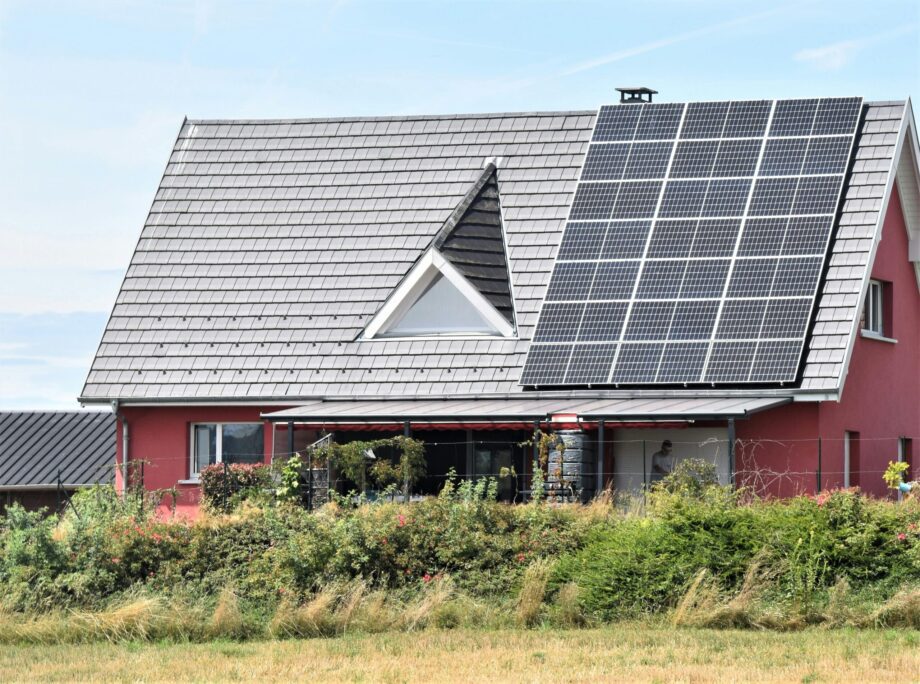introduction
The easiest way to use solar panels in home installation
In today’s world, where interest in sustainability and clean energy is increasing, solar panels have become a popular and effective option to meet household energy needs. However, dealing with solar panel technology may seem complicated to some. Therefore, in this article, we will provide a simplified guide to installing solar panels in homes, focusing on using the available tools and devices to understand and apply this technology effectively.
What are solar panels?
Solar panels, also known as solar cells, are devices that convert sunlight into electricity using the photovoltaic effect. The panels usually consist of solar cells made of silicon, a semiconductor material that converts sunlight into an electric current.
Types of solar panels
Monocrystalline panels:
Made of pure silicon.
They are very effective in converting solar energy into electricity.
They are characterized by their high efficiency and long life, but they come at a higher price.
Polycrystalline panels:
Made of a mixture of silicon crystals.
Less efficient than monocrystalline panels, but less expensive.
Thin-Film Panels:
Made of fragile semiconductor materials.
They are light and flexible, but less efficient than other panels.
Basic steps for installing solar panels at home or on the farm






1-Energy needs assessment:
Before you start, determine how much energy your home needs. You can find out by checking previous electricity bills or calculating the consumption of electrical appliances in your home.
2-Choosing the right system:
- Grid-Tied System: This system is connected to the public electricity grid, and allows you to sell excess energy to the grid.
- Off-Grid System: Relies on batteries to store energy for use when there is no sunlight.
- Hybrid System: Combines both grid-tied and off-grid systems, allowing you to benefit from the advantages of both.
3-Choosing Solar Panels:
Choose the type of panels based on their efficiency, cost, and suitability for your home needs.
Make sure to buy panels from reliable and reputable companies to ensure product quality and performance.
4-Solar Panel Installation:
Selecting a location: Choose a suitable location on the roof that receives the most sunlight. Make sure the roof is free of obstructions such as trees or buildings that may block the light.
Installing the panels: Secure the solar panels to the roof using appropriate brackets and screws. Make sure the panels are secure and level to avoid any performance issues.
Connecting the system:
5-Connecting the system:
Connect the panels to the charge controllers and inverters. The inverter is the device that converts the direct current (DC) generated by the panels into alternating current (AC) that can be used in the home.
Needed equipment:
Inverter: Converts solar energy into electricity that can be used in the home.
Charge Controller: Regulates the flow of power to the batteries if you are using an off-grid system.





6-Adding batteries (if necessary):
In off-grid systems, you will need batteries to store energy for use during times when sunlight is not available. Choose high-quality batteries that can provide power for long periods.
7-Maintenance and follow-up:
Check your solar panels regularly to ensure they are working efficiently. Clean your panels regularly to remove dirt and dust that may affect their performance.
Monitor your system using monitoring tools to track the amount of energy produced and used.
Benefits of Using Solar Panels at Home
Cost Savings:
Solar panels can help reduce your electricity bills significantly, especially if you use a grid-connected system that can sell excess energy.
Environmental Sustainability:
Solar energy is a clean, renewable energy source, which helps reduce carbon emissions and harmful environmental impacts.
Energy Independence:
Solar panels provide energy independence, especially in off-grid systems, meaning you won’t be solely dependent on a traditional power source.
Increased Property Value:
Installing solar panels can increase the value of your property, with many buyers viewing solar panels as an attractive feature.
Tips for Improving Solar System Efficiency
Proper Orientation:
Make sure your solar panels are oriented toward the sun to get maximum exposure to sunlight.
Check for Shades:
Remove any potential sources of shade that could affect the performance of your panels, such as trees or chimneys.
Technology Update:
Keep up to date with the latest developments in solar panel and inverter technology to improve the efficiency of your system.
Efficient Storage:
If you are using an off-grid system, choose high-quality batteries to store energy efficiently.
Conclusion
Installing solar panels at home can be a positive step towards energy independence and cost savings, as well as contributing to environmental conservation. By following the simple steps outlined in this article and understanding common terminology, you can easily reap the benefits of solar energy. Remember, hiring a professional in this field can help ensure that your system is installed correctly and efficiently.

Your article helped me a lot, is there any more related content? Thanks! https://accounts.binance.com/de-CH/register-person?ref=UM6SMJM3
Your article helped me a lot, is there any more related content? Thanks!